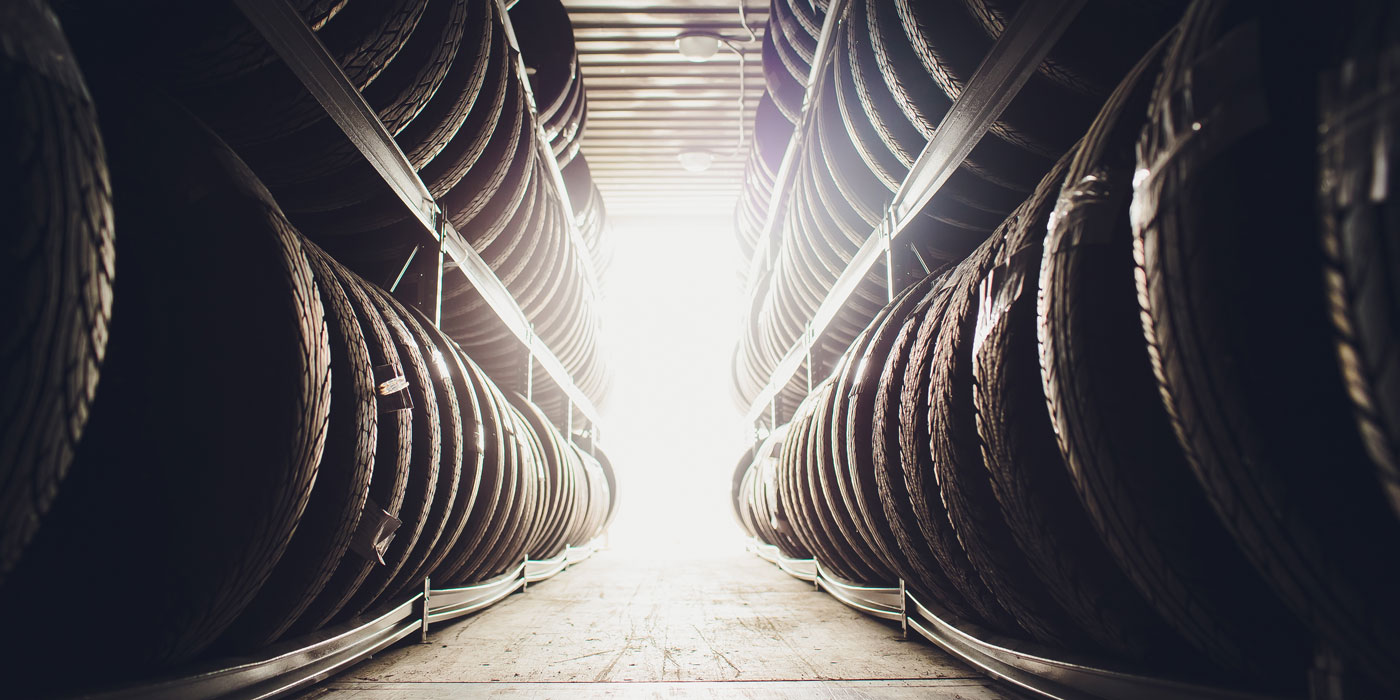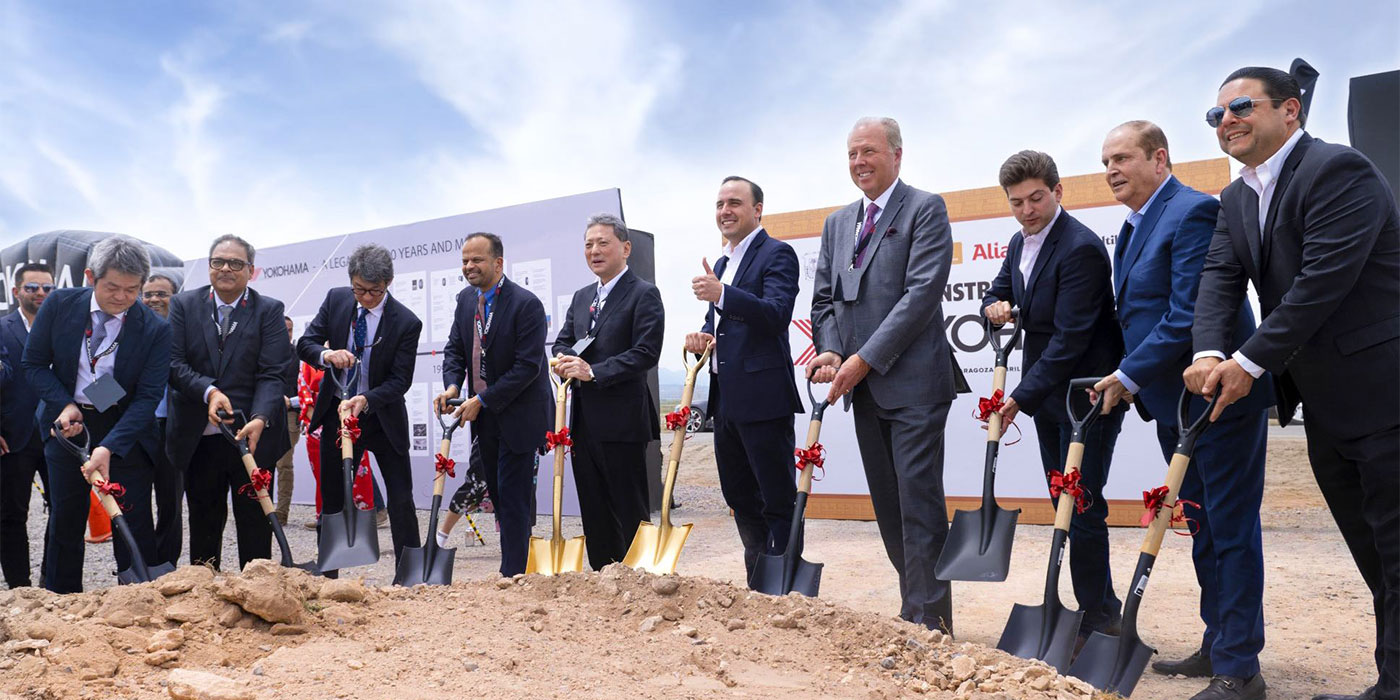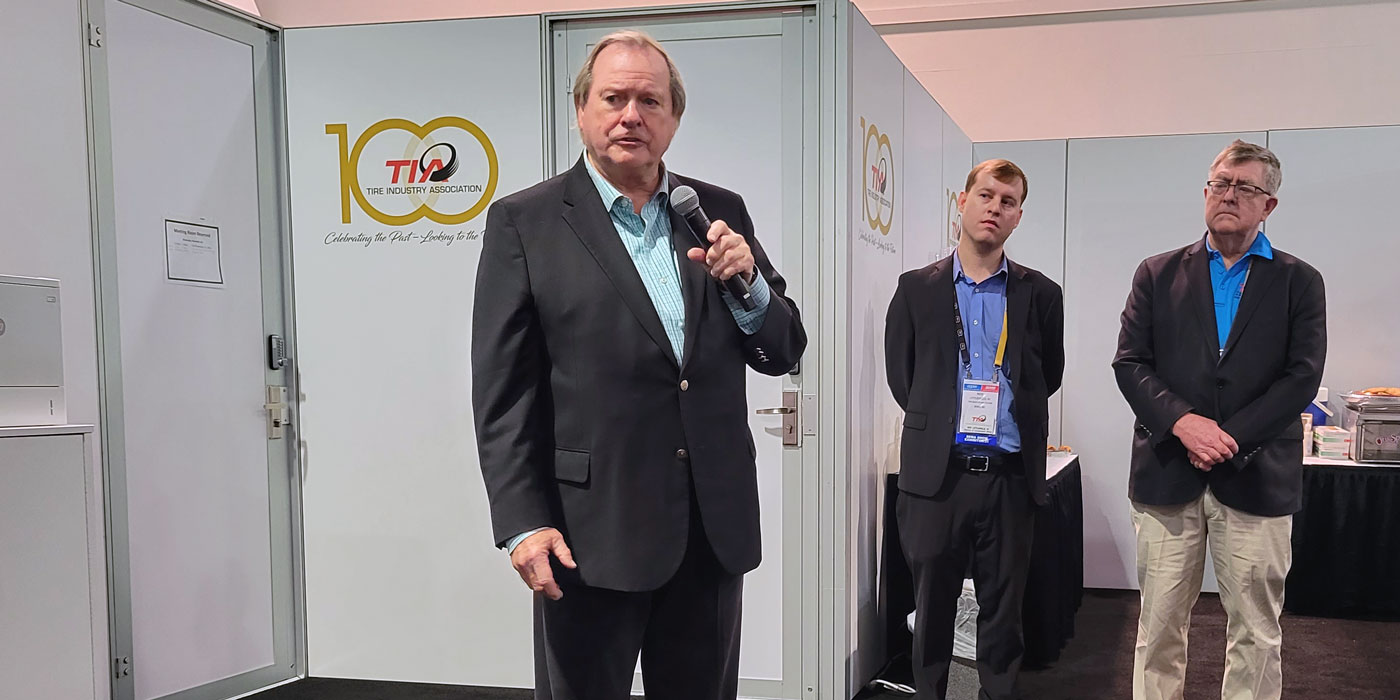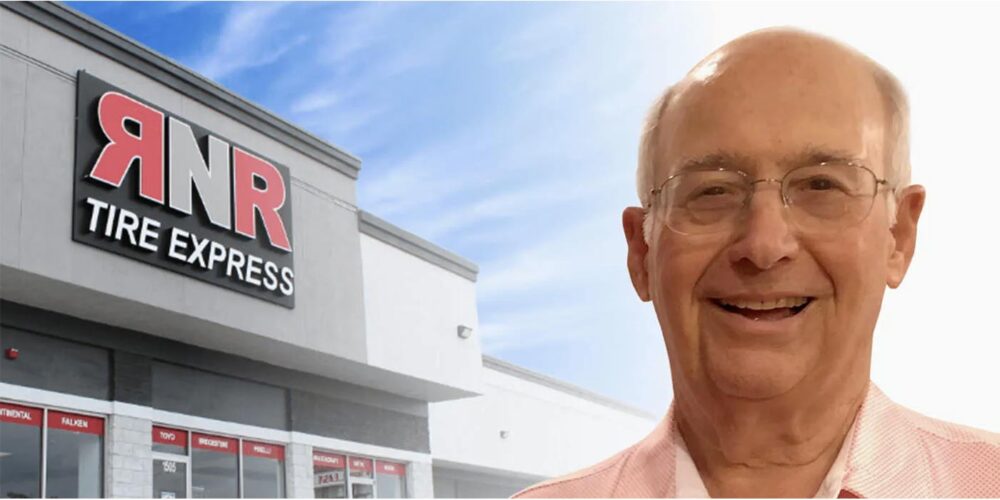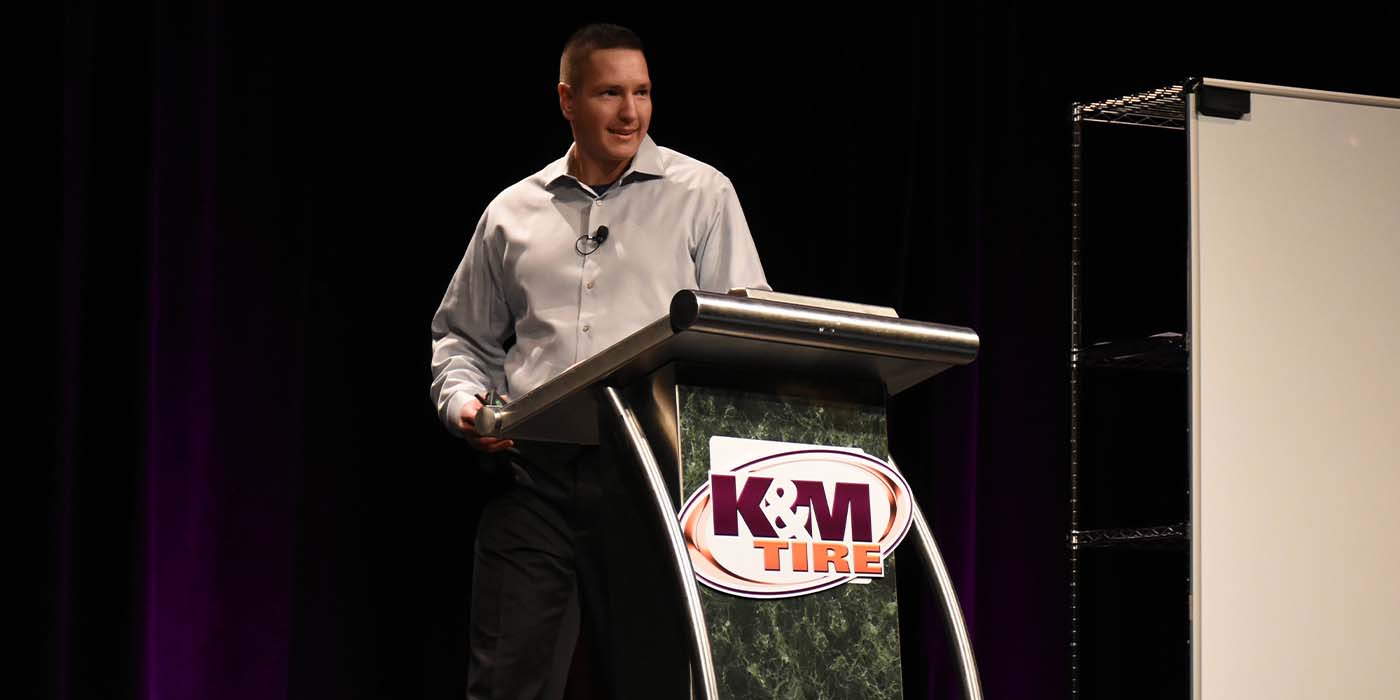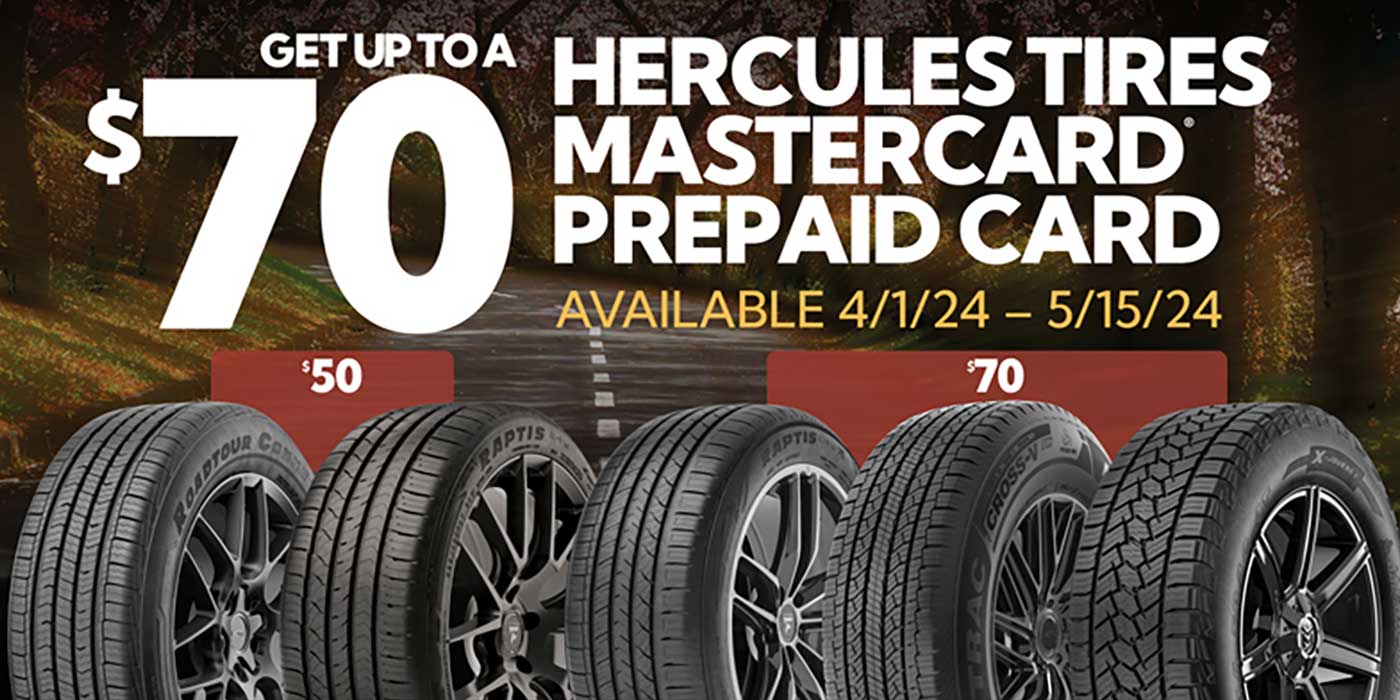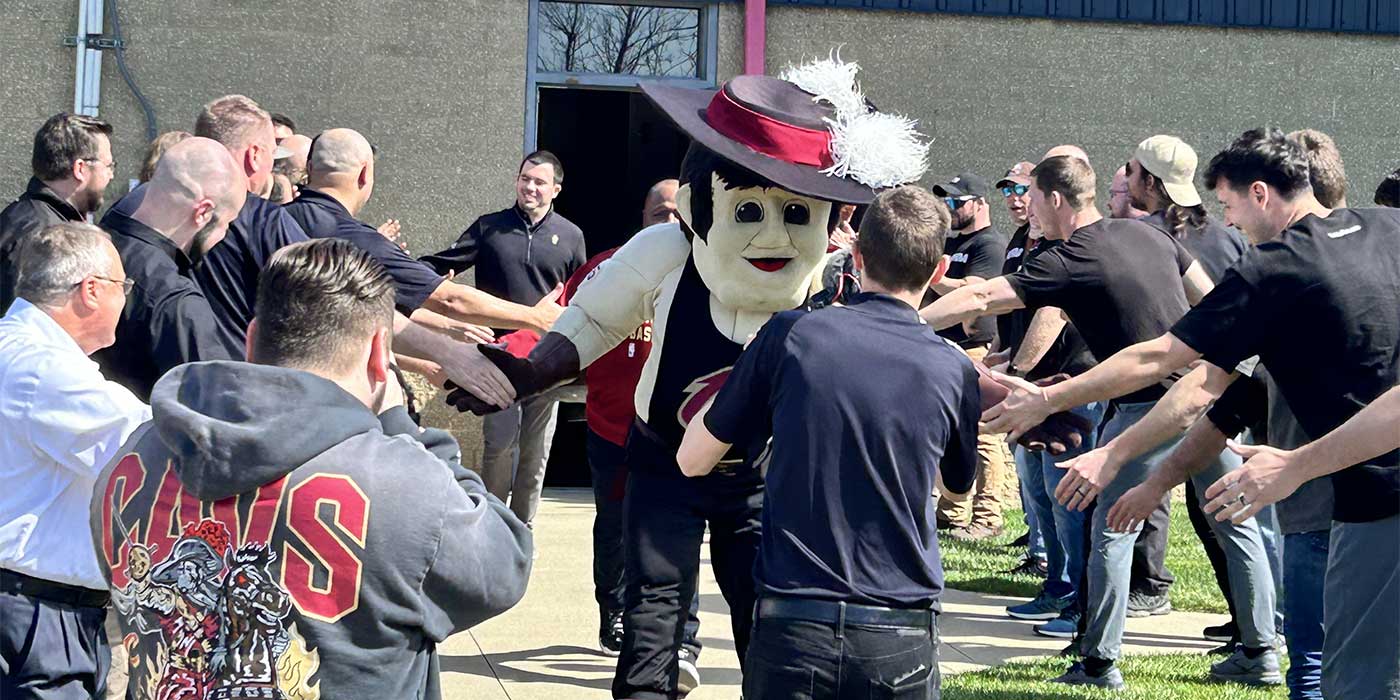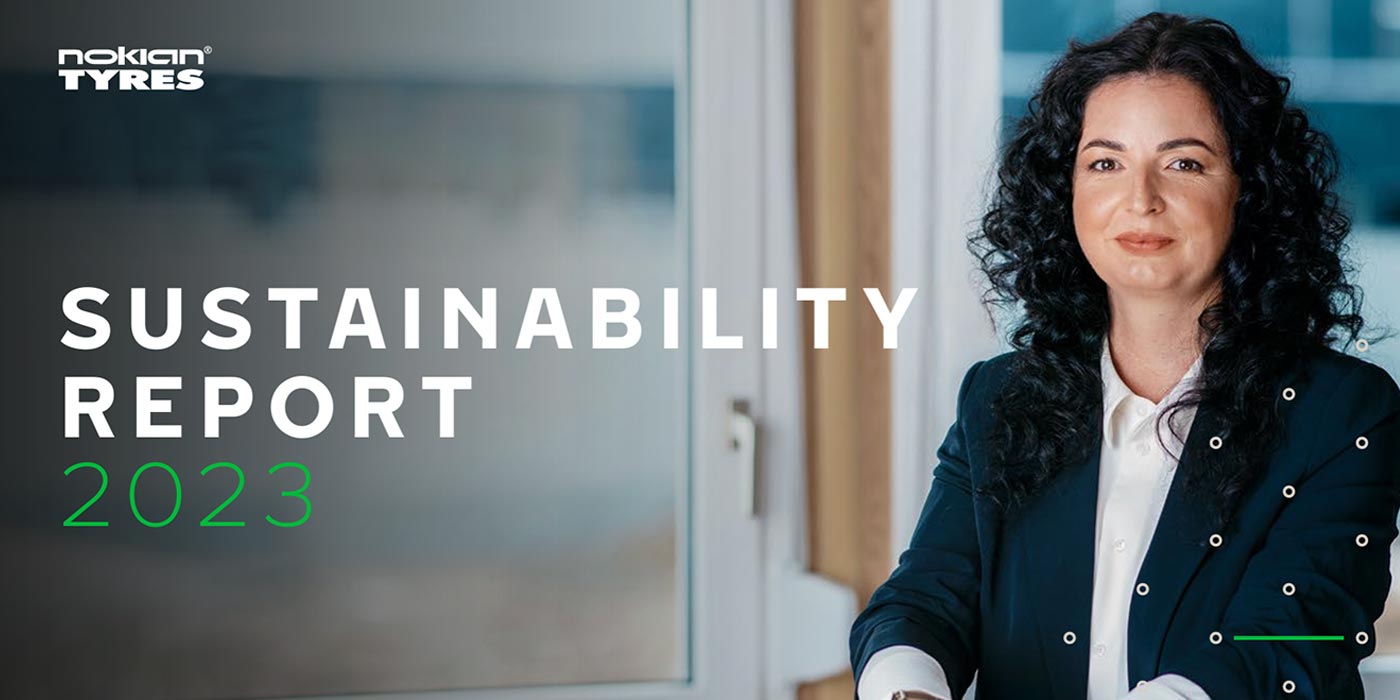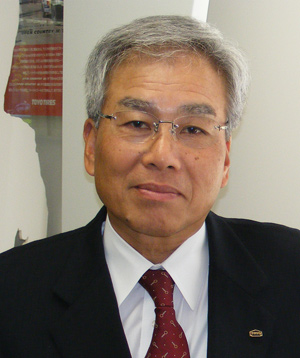 When Kenji Nakakura took over aspresident and CEO of Toyo Tire & Rubber Co. on Jan. 1, 2008, henever imagined just how hard that job would become. Just months intothe job, the world financial markets melted down and tire sales wentfrom slow to abysmal. Instead of steering the company toward its 70thanniversary in 2015 on the wings of new investments in products andfacilities, Nakakura has faced a series of painful reductions andstarkly revised business plans.
When Kenji Nakakura took over aspresident and CEO of Toyo Tire & Rubber Co. on Jan. 1, 2008, henever imagined just how hard that job would become. Just months intothe job, the world financial markets melted down and tire sales wentfrom slow to abysmal. Instead of steering the company toward its 70thanniversary in 2015 on the wings of new investments in products andfacilities, Nakakura has faced a series of painful reductions andstarkly revised business plans.
Toyo’sfiscal 2008 told the tale: sales dropped 8.1% to $3.27 billion, netprofits were a negative $106.7 million. North America, whichcontributes fully a third of Toyo’s global sales, posted 2008 profitsof $20.2 million (down 60% vs. 2007) against sales of $980.4 million(down 14.2% vs. 2007).
Ina recent interview with Tire Review, Nakakura, 60, revealed the detailsof the company’s revised plans, its expectations for the future, andhow its brands will press ahead in a highly competitive global market.
Talkabout the specific changes Toyo will make in response to its 2008results, and what you see as the challenges Toyo and the tire industryface going forward.
There are some very near term countermeasures that we are taking. We have been taking them since autumn oflast year. First of all, we want to have management that takes verygood care of our cash flow – investments, inventories and also costsand expenses, we want to bring all of these down. Regarding ourinvestments, the exception is all of the investments that have alreadybeen done. All of the others have already been frozen. And we havealready had short-term shutdowns at some of our plants in order toadjust our inventories. We also have a global effort to decrease thenumber of our employees – full and part time. We used to have 10,200employees but we have decreased that to 9,100 as of the end of March2009, and those reductions include 200 white-collar workers. Thedownsizing of our personnel has been mainly among our non-full-timeworkers. These have been contract workers.
When you thinkabout the costs and expenses, full-time employees actually have higherwages. This may be a Japanese way of thinking or just my way ofthinking, I’m not sure, but full-time employees are investing theirlives or entrusting their lives with us whereas part-time or contractemployees are investing their time with us. In Japan the labor marketis not very liquid. We don’t have the infrastructure. So when peoplejob-hop or switch companies, it’s not to their advantage. It’s veryrare for people to job-hop. In many cases it’s not necessarily good fortheir career.
As I mentioned, we want to engage in managementthat takes good care of its cash flow and we also want to decrease ourfixed expenses – and I think that most companies are doing this – butwe are also engaging in structure reform. As an example, our productionvolumes are down right now but we need to have a structure in place sowe can make profits even when production is down. So we are looking atdirect and indirect efficiencies. It is the same for the administrativedepartments as well, the way they do things. We’re trying to think in azero-based way. We are reviewing everything that we have been doing inthe past to make sure there is value added in everything being done.One example is e-mail; is e-mail going to only the necessary people oris it going to many people who don’t need it? If that is the case,then a lot of people are wasting time opening and responding to e-mailsthey don’t need. That costs money. It is the same with meetings. Thereare people who attend meetings, they take all the time and expense toattend but don’t contribute in the meeting. They take back all thatthey heard in the meeting but don’t do anything with it. So is thisreally leading to profits? We are trying to rethink and review beingzero-based. We are looking at our businesses that are not profitable ordon’t have future potential, and looking at changing the way we dothings. What we are aiming for is lean operations.
Japanesestyle management is starting to change in that way, too. When someonejoins your company they become part of a family, so whether they aregood or not so good you stick with them until the end, you stand bythem. Back in the days when Japan was expanding and its economy wasgrowing that was fine, but we’re seeing a shrinking economy and with afatty constitution you can no longer survive. So we’re trying to dothis in all parts of the corporation – including sales.
How are these changes impacting the way you manage the company?
Forme this year, the most important issue I need to tackle is structurereform. Whenever I have time, I visit our plants and sales offices andask them how structure reform is going, how they are doing. What’sreally important is that people need to think for themselves and bringabout changes themselves. When people think for themselves voluntarilyit may develop into something really good. However, if things are donein the U.S. or European style, with the top staff thinking about thingsand writing the scenario, things may get done faster but they are notlong lasting. We think this recession is a very good opportunity for usto move forward with structural reform – thinking by yourself andtrying to make yourself lean. If we can have this really take root,when the time of growth comes we can start growing very quickly.
Wealso have seven cross-functional projects where we are looking forgrowth opportunities. Nitto’s global development is one of theseprojects.
Every three years we come up with a medium-termbusiness plan. The one we have right now started in 2008. When you lookback to when the plan started, the situation has completely changed sowe have reviewed that business plan. So by March 2011, the end of the2010 fiscal year, we plan to have a structure in place with a total of8,300 employees. The original plan for investments for three years was104 billion yen, but we will downsize this to 54 billion yen. Wecurrently have 35 billion yen in inventories and we plan to reduce thisby 4 billion yen by the end of 2011. Regarding expense, we willdownsize our expenses in 2009 by 4 billion yen; we have not yet decidedabout expenses for 2010.
You mentioned changes to your sales efforts…
Wealso want to enhance or beef up on our sales efforts. Toyo has mainlyrelied on North America for sales, and a lot of our profits come fromNorth America, as well. And we will continue to place emphasis on theNorth American market, but we are going to place more managerialresources on Asia and Japan because the performance of Toyo is not asgood as other competitors in the industry. This is our weak point. Ourmarketshare in Japan right now is 10%, and we are behind Bridgestone,Sumitomo and Yokohama. Japan, I think, is still a profitable market.The market here is rather unique because of the sales channels.Retailers are very small and they don’t have warehouses and carry biginventories. So you need a delivery network, and if you don’t have thisnetwork it is very difficult. As long as you can get hold of themarketshare it is a stable, profitable market.
Canyou change the distribution scenario to take the burden off of thetiremaker, or create a system more similar to North America withindependent and company-owned distribution that takes the capitalburden off the tiremaker?
That is a very important point,and it is one of the important themes of our structure reform. This isa channel where Bridgestone and Sumitomo have a very strong advantage.But if we come up with something different, then they will be at adisadvantage. So we think if we can bring about a paradigm shift likethat, it will be advantageous. Bridgestone and Sumitomo have the samekind of distribution here as anyone else, but they have more servicepoints and more refined systems. But they have the risk of thoseturning into very bad assets.
When you speak of Asia do you mean China?
Yes,mainly China. Centered around China, but more like the Chinese culturezone – Thailand, Indonesia, Philippines. These are all opportunities.These countries all have a heavy Chinese influence politically andbusiness-wise.
Even when things start coming back, it won’t bethe same as, say, 2007. In Japan, people have the ability to buy andthey have strong ability to buy. There is very strong savings in Japan.They are saving 1,400 trillion yen that is lying there sleeping. Why isthis? It’s because people don’t want to consume. They are worried aboutthe future. They don’t feel that the future is okay. They are worriedabout jobs and pensions and insurance, they don’t feel secure abouttheir futures. They feel the politicians in Japan are all hopeless. Ithink the media are talking too much about unemployment, which ismaking people more insecure. But if people are stimulated in a properway, they have the money so I think they will spend.
I thinkthe Asian market is different. This may be my personal opinion, butAsian people want to live a more cultural life. If they had the moneythey would buy homes, cars, electronic devices and appliances. Chinesepeople in particular feel that just having cash is no good. They wantto change the cash into something that is tangible. The Chinese peoplewant to spend and if you look at it there is still economic growth inChina. Even though China’s growth has slowed to less than 10%, it isstill growing and it is still a large market. And there are lots ofmillionaires in China, much more than in Japan. That is the market wehave to go after. The other emerging countries have problems with theircurrencies. Ukraine, Russia and others have problems with exhange ratesand with their reserves.
What about growth in India?
Indiais an extremely difficult market. They are not open, and the tax rateis extremely high. They want to help their internal industries grow soit’s a very closed market. But it is an interesting market. In Indiathere are three cultural areas – Islamic cultural area, a Chinesecultural area and the Indian cultural area. The Chinese are unable togo into the Indian area because the culture is completely different.And I think the Chinese manufacturers are not interested in India atall. So maybe this is an opportunity for Japan. However, I think itwill be very difficult to do business in India unless you havemanufacturing sites in the country.
Are there opportunities for relationships or tie-ups with Indian tiremakers?
Ithink all of the manufacturers in Japan are getting inquires fromIndian tire companies. It’s not just the Indian manufacturers, but alsothe Chinese. They want to become global players. The Koreanmanufacturers have already attained the position as global players. TheChinese and Indian manufacturers are not there yet. Technology is theproblem. With the passenger radial tire, the hurdle there is not thathigh. The hurdle for them is the OE market. The demands of OE customersare very high and are difficult to attain. Continuous development andimprovement are necessary. If you look at the true global players, theyspend a high percentage of sales on R&D. The Chinese manufacturersare only spending 1% or 2% at most and the Indian manufacturers arespending less than that. It is very easy to copy electronic productsbecause there are blueprints and data. There is very little of thatwith tires because you are constantly making adjustments to meet theneeds of the vehicles and the OEMs. So you just cannot simply copy atire.
Truck tires are especially difficult. These tires areused in very tough environments. You need a high level of technologyfor designing and manufacturing these kinds of tires. We find that alot of Indian and Chinese manfacturers are in touch with us becausethey want those technologies.
Froma product standpoint, what can you tell us about what Toyo is doing tobroaden its product portfolio? Are there specific product areas youfeel Toyo needs to address?
In the North American market,Toyo has – and in particular you can say this for Nitto –made its nameand profits in niche markets. That is how we started out. We use theword broadline, but we really started out by changing the definition ofthe wheel and the tire. What we have been doing is we look at wheels inthe OE market and we started changing the tires for the OE market. Weoffer tires with the same rim diameters that can be used on multiplewheel positions. In niche marketing, design is very important. In thebroadline market, quality is the most important. With these basic tiresthere are customers who feel that cheap tires are okay. They have abudget, and price is most important. That’s one set of customers. Butthere is another group of customers for whom safety and quality is mostimportant. We believe there is a volume of these customers.
Asmentioned before, there are the technologies we gained through truckand OE tires. We believe we have very good technologies for creatinghigh quality products. For example, at our U.S. plant we have nearlycompleted development of a tire that is number one globally in terms ofprecision. With an 18-inch tire, the balance weight we have attained iswithin 5 grams. The OE standard is 50 grams and in the replacementmarket the standard is 60-70 grams. Our standard right now for Toyo is25-30 grams. So 5 grams, we believe, could be considered quite anamazing thing. We will be able to meet that level for all of thepassenger tires – Toyo and Nitto – we produce at the Georgia plant.People in the dealerships will be able to see the quality of Toyo andNitto tires, and consumers will see this because there won’t be balanceand vibration problems. Also, the look will be better because therewill be fewer balance weights. There are a lot of these hiddentechnologies we have that we think we can take into the market and gainshare. We can attain this precision thanks to our new engineeringmethod and our ATOM manufacturing technology. We are also working toimprove the precision of our light truck tires produced there. We alsouse the ATOM method in Japan, but it is very limited. So this is reallyonly at the Georgia plant.
Isthis something that is only because of the ATOM system, or is itsomething that with non-automated systems you can show improvement?
Thereare a lot of improvements to the existing methods we use. But the mainthing is the ATOM system because the margin of error is quite small. Intraditional methods, the room for errors is much larger, whether it ismixing or creating components or assembling those components. With theATOM system, you don’t have to rely on human skills.
How will the product changes to broaden Toyo and Nitto offerings impact the Georgia plant?
Wehave already entered the second phase at the plant with passengertires. The first phase was mainly light truck products, but the demandhas come down so we are switching some of the light truck facilities topassenger tires. And the Georgia plant already has the capability ofmaking profits. As long as we have the volume we can make profitsthere. So producing broadline products at the Georgia plant will meanmore stable profits.
Last yearToyo and Bridgestone agreed to work together on a number of fronts. Howhas this relationship progressed so far? What benefits has Toyorealized from this agreement?
We announced the allianceon May 16 of last year. President (Shoshi) Arakawa of Bridgestone andmyself have met and toured each other’s plants and we looked at eachother’s newest technologies. We have been very open with each other. Wehave been hiding nothing from each other. But in the R&D areas,that’s not quite the case because we are still competing with eachother. We currently have five teams that are sharing and exchanginginformation on manufacturing technologies, purchasing, co-production,distribution and non-tire businesses. All of the teams have beenholding meetings with each other on a very friendly basis. More than weimagined, the Bridgestone members have been very friendly, they havebeen gentlemen.
Toyo has had relationships with many othercompanies – General, Continental, Yokohama, Goodyear, Michelin and atone time with Pirelli, as well as Chinese companies. So you might saythat we don’t have much resistance working with other companies.Bridgestone has shown a lot of interest, especially in the maufacturingtechnologies. They have been talking about the technologies that theywant, the new engineering methods they are interested in. And we arevery much interested in their plants and how they do theirmanufacturing. They have something we don’t have, so we’re interestedin that. Right now we are still at the stage where we are exchangingideas and sharing technologies so the effects should be visible lateron. And we think that in the future, this is where the biggest profitswill come from. With the purchasing, Bridgestone is such a largecompany that we have to go carefully because of the antimonopoly laws.Maybe we can become a customer of theirs, they can be our supplier.Regarding distribution, in Japan we have already started with somejoint efforts.
We are doing this together, so we want to tryto avoid announcing something before they do or them announcingsomething before we do. We will be making official announcements on thefruits of the alliance later on.
Have there been any discussions about expanding that relationship, and if so, in what ways?
Wehave said, ‘Let’s first work on these five areas, see what the resultsare and then we can start thinking about other areas.’ So we have nottalked about anything further just yet.
Youmentioned that Bridgestone had learned some things from your automatedsystems. Has Toyo learned things from Bridgestone’s BIRD system?
Yes there are several things we have learned form their BIRD system. They have several things that we do not.
Do you see other tiremakers entering into similar relationships with other tire companies?
Itis difficult to say. I think a lot of people think it is strange that agiant company like Bridgestone and a small company like Toyo can form arelationship on an equal basis. Normally with such alliances, one ofthe parties will have very strong technologies and the other companysay they want to use these technologies. But we have a more equal basiswith manfacturing technologies.
What types of tires is Toyo working on for the future?
Lowerrolling resistance. That’s where future developments will be. Loweringrolling resistance while keeping other characteristics the same orbetter, and maybe lowering costs.
Toyois a partner with Continental and Yokohama on a medium truck tire plantin the U.S. What is the status of that relationship and plant? Is Toyoconsidering adding truck tire capacity to its Georgia plant?
Wehave an agreement in place and it is not possible to manufacture trucktires any place in America other than the joint venture plant becauseof the agreement. Because of the recession we have excess capacityright now so it is very difficult for us to keep up with the minimumrequirement that we have. Adding capacity is not needed right now.
Is Toyo looking to expand its North American truck tire business significantly?
No, we’re not thinking about that right now.
Let’stalk a little about Toyo’s eco-tire plans. What is Toyo working on interms of “green” tires? What new technologies are being used?
Renewablecomponents and natural rubber are two areas we are considering. Wecannot disclose this yet but we have some very new technologies. Wehave been offering a lot of functions using synthetic rubber that werenot previously possible with natural rubber. NR is an excellentingredient and it has a lot of functionality but it doesn’t have anyoutstanding properties. With the sport tires, for instance, with SBR itis possible to raise abrasion resistance, something that is notpossible with NR technologies.
Long-term, how far does Toyo want to take its eco-tire program? Will it encompass every tire Toyo produces?
In Japan, we have already started with the truck tires and are looking to expand this.
Looking at the whole tire industry, what sort of environmental issues do you feel the tire industry needs to address?
Withtires, it is air that supports the weight. But the part that wears isonly the tread. So the body needs to be reusable, tires need to berenewable. Not necessarily retreading, though that is one solution.That’s the kind of technological development that is necessary. Thoseare the kinds of products and engineering methods you will see progress.
Among all tiremakers, who do you think is the leader in terms of environmental programs?
Itis difficult to say. All companies will probably say it is themselves.Even Chinese companies will say it is them. But it is probably going tobe the European or Japanese manufacturers that will lead the way.
Withall tiremakers looking to build business in China – and now in Indiaand other emerging markets – has the North American market become lessimportant to tiremakers?
If you talk about relativespeaking, then probably yes. For us, of course, North America willremain a very important market and we have not changed our target forNorth America, which is a 5% marketshare. That remains the same. And wedo have plans to expand our Georgia plant. I think for the wholeindustry, too, North America will continue to be an important market.
Chinaand Asia are sort of like Africa in the old days when Europeans wererushing there to try to build colonies, to be there first and get asmuch as they could. That’s what it is like, I think, with China. We arestanding on the sidelines and watching what happens. What Toyo does iswait for the market to mature a little bit and then focuses oncustomers who want high quality products. It’s not like we wantcolonies; that’s not our business style. We want to find partners sothat we can sell high quality, high image products to customers whowant them. Others have been rushing into China and going after volumebut we have been taking a different strategy. China will have morevehicles to be sure, so it will be a much larger market than NorthAmerica. But the U.S. is still a very large market. Even though theU.S. market is shrinking right now, it will still produce 10 million ormore new vehicles each year. And in the U.S. market, it is not just thecheap cars and cheap tires that are sold. There are more expensive orbigger models selling in the U.S.
What do you see as Toyo’s weaknesses?
Oneweakness that we have is we do not have a manufacturing base in lowcost countries. We don’t have our own facility in a low cost country.
What do you see as Toyo’s strengths?
Oneis the two top brand structure that we have with Toyo and Nitto. Thesecond thing is we have very good fundamental manufacturing, and TBRand OE development. Those are strengths that we have. And the degree offreedom in making decisions is very high. For example, if we think up anew tire we can get to market quickly and for a lot lower investment.At a major large company, the mold expense for a new product will bevery high because they need 10 times as many molds. So they have highrisk if the product fails to have an impact. With a smaller companylike Toyo, we can have Nitto’s Invo product. The Invo product wouldhave been impossible at a large company. And something like the ATOMplant in Georgia would be difficult to do at a large company becausethe risk is high. For us the risk is lower, so it’s easier to makethose managerial decisions.


